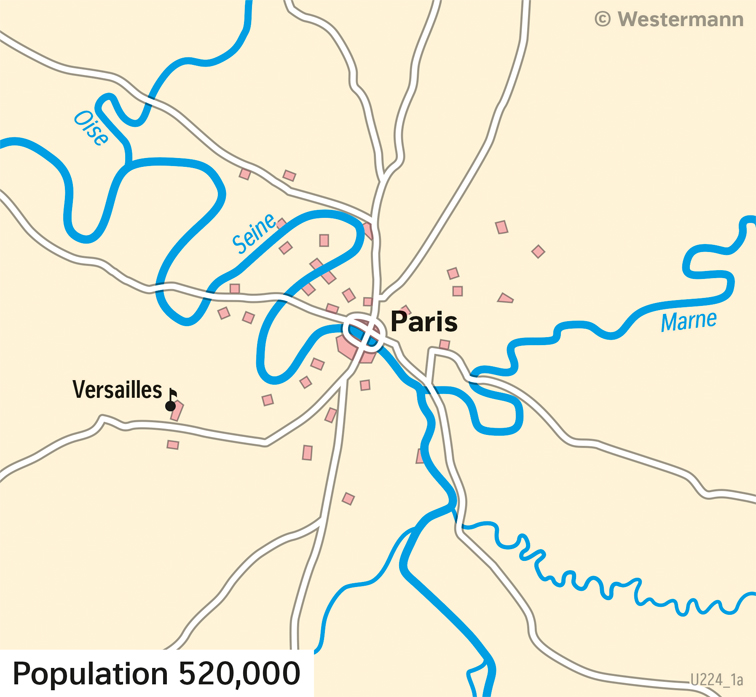Paris - Urban growth since 1700
Turn of an Era
978-3-14-100890-6 | Page 92 | Ill. 1

Overview
Close to a passage across the Seine in the area of the Île de la Cité, the Celtic tribe of the Parisi founded a settlement which was given the name "Nautae Parisiaci" after the subjugation of Gaul by Julius Caesar (52 BC). The Gallo-Roman town was abandoned in the course of the migration of the peoples, but, under the Merovingians, urban development began again on the same site.
Around 1700
Protected by a church of the Apostles built under King Clovis I south of the Seine, monasteries and convents were founded, from which the University of Sorbonne developed in the High Middle Ages. On the Île de la Cité in the heart of Paris, the Carolingians built a royal palace in the 10th century, later joined by the cathedral and public institutions. The northern bank of the Seine, on the other hand, developed into an economic centre. The first city wall was built in 1180 on the south side of the Seine, and from 1370 a second wall enclosed the north of the city in a sweeping arc. With the strong population growth between 1500 and 1700, when the number of inhabitants in the capital tripled from around 200,000 to 600,000, the suburbs beyond the city walls grew together to form an ever-denser ring. In the middle of the 17th century, Cardinal Richelieu had the Cardinal's Palace built about 150 metres north of the Louvre and the Tuileries Palace, which he later bequeathed to the royal family and thus was henceforth called the "Palais Royal".
The old city walls were demolished from 1670 under Louis XIV and replaced by wide ring roads, which later became the Grands Boulevards. At the end of the Tuileries, the king had a 70-metre-wide avenue laid out through the then disreputable Elysées district. At first it had the character of an elongated park, with inns and places of entertainment - it was not until the 19th century that the "Avenue des Champs Elysées" was to develop into one of the most famous promenades in Europe. In addition to streets, Louis XIV had a number of famous squares built, including the Place Royal (today: Place des Vosges), the Place Vendôme and - as the most beautiful and largest square in Paris at the time - the Place de la Concorde. South of the Champs Elysées, the Hôtel des Invalides and the Invalides Cathedral were built for the veterans of his numerous campaigns, and a few steps away his successors built a military academy.




